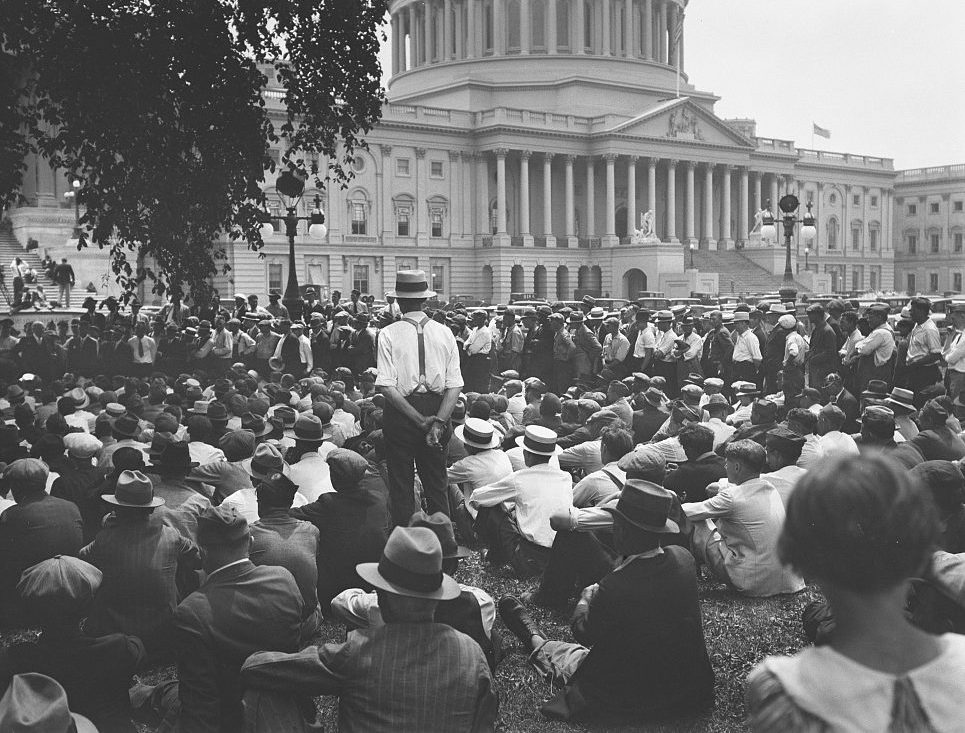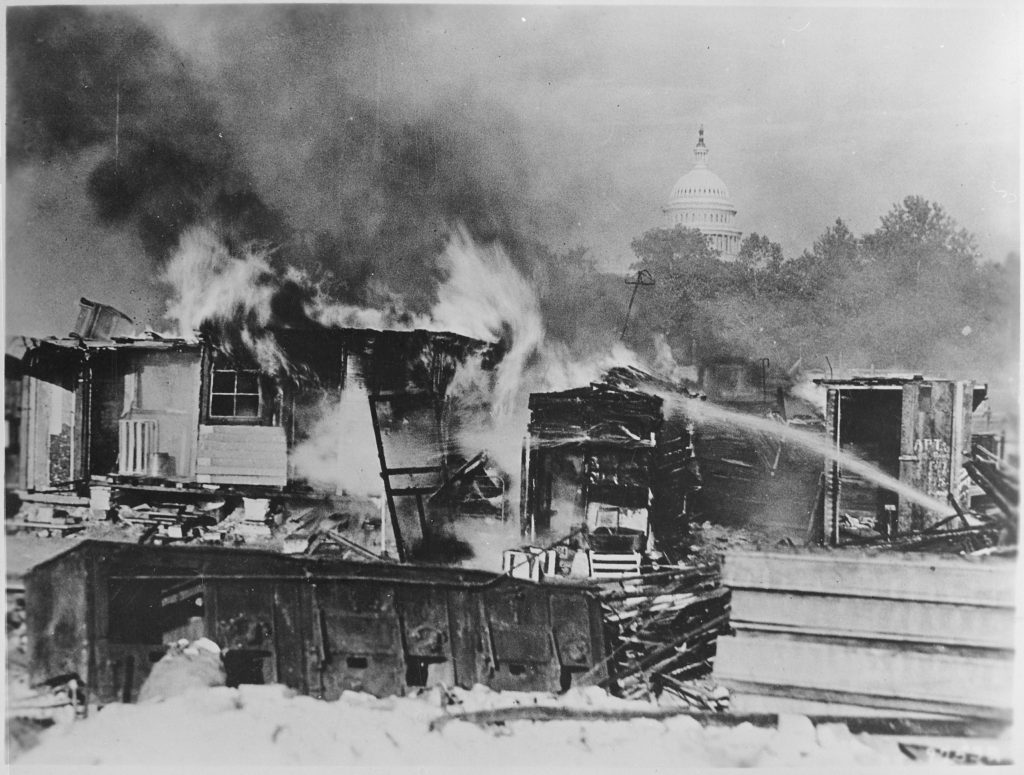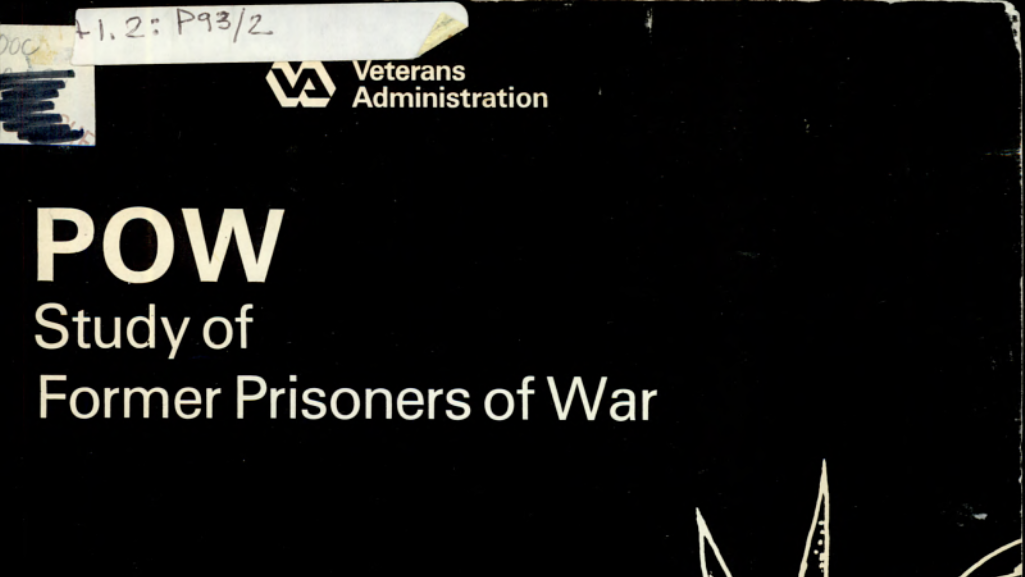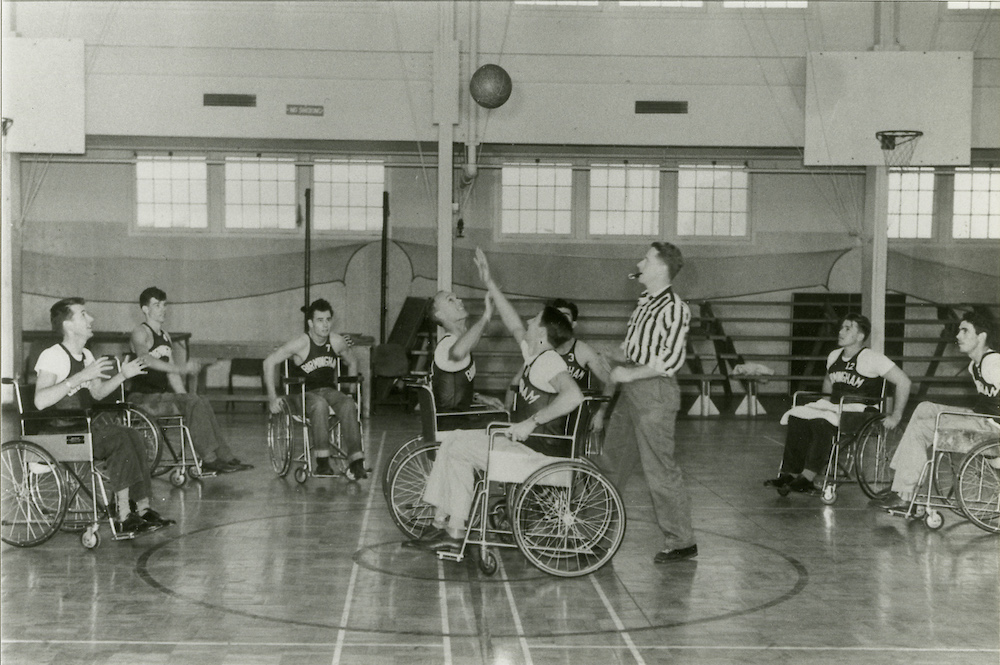
After World War I, Americans discharged from military service faced a difficult homecoming. Many struggled to find work in the tight labor market created by a post-war recession. They also felt ill-used. During the war, civilian workers benefited from a booming economy and enjoyed wages that far exceeded their own military pay. In the early 1920s, Veterans took their grievances to Congress. The newly formed American Legion and the more established Veterans of Foreign Wars led the way in lobbying for a one-time cash payment that would compensate Veterans for their missed earnings. In 1924, Congress passed the World War Adjusted Compensation Act, which awarded Veterans interest-bearing certificates with a face value of up to $625. But the law came with an important proviso: the certificates could not be redeemed until 1945.
Even with its deferred payout, the Bonus Act, as the bill was called, satisfied Veterans’ demands for some form of monetary compensation for their service. Their attitudes changed, however, with the onset of the Great Depression. The economic crash sent unemployment rates soaring and caused immense hardship for millions of Americans. Veterans were particularly hard hit by the crisis and they appealed to the government for immediate payment of their bonus certificates to alleviate their financial distress. When the administration of President Herbert Hoover proved recalcitrant, they mobilized for action.
In the summer of 1932, an estimated 20,000 Veterans, many with their families in tow, descended on Washington from all parts of the country to petition Congress for their money. Dubbed the “Bonus Army” or “Bonus Marchers,” they settled in tents, cardboard shanties and wooden shacks in parks and empty buildings in downtown Washington. They also established their main encampment across the Anacostia River on a muddy expanse of land called the Flats. Their daily presence on the steps and grounds of the U.S. Capitol, however, failed to win over Hoover or enough members of Congress. After the Senate on June 17 rejected a bill authorizing payment of the bonuses, many of the marchers went home. But even after Congress adjourned for the season in July, several thousand stayed on to continue their protests at the Capitol building.

Fearful that the demonstrations would turn violent, Hoover and the District of Columbia Commissioners on July 28 ordered the police to remove the marchers from their downtown camps. Following a skirmish that left two marchers dead and three policemen injured, Hoover made the fateful decision to send in the Army to restore order. Later in the day, six hundred soldiers, some mounted on horseback, and six light tanks under the command of General Douglas MacArthur moved against the Veterans. The troops on foot threw tear gas grenades and the makeshift shantytowns on both sides of the river went up in flames. The Bonus Marchers dispersed and by July 30 the city had been cleared of their presence.
In his official report, MacArthur praised his men for their discipline and avoidance of civilian fatalities. But the events of July 28, splashed across the front pages of the nation’s newspapers and shown in movie theater newsreels for weeks afterwards, prompted a swift backlash. The Army was booed and Hoover excoriated for his heartless treatment of the Bonus Army protesters. When he heard what had happened, Franklin Delano Roosevelt, the Democratic candidate for president in 1932, reportedly remarked, “Well, this elects me.” In fact, Roosevelt did handily defeat Hoover in November. His victory left Veterans hopeful that they would soon be able to convert their certificates into money and an estimated 3,000 returned to Washington the following May to press their case. But with the country still in the grips of the Great Depression, Roosevelt had other priorities. Not until 1936 did Congress pass a bill allowing Veterans to exchange their certificates for saving bonds redeemable at any time. The Treasury wound up distributing more than $1.4 billion in payments to needy Veterans that year, as most chose to cash in the bonds within months of receiving them.
 VA HISTORY IN FOCUS: During the height of the Great Depression in 1932, thousands of World War I Veterans traveled to Washington, D.C. Dubbed the Bonus Army, they were seeking early payment of the bonus certificates they had received after the war as extra compensation for their military service. Fearful that the Bonus Army demonstrations would turn violent, President Herbert Hoover sent in the Army to restore order, leading to a confrontation in downtown Washington captured in stark photos and stunning newsreel footage. Dr. Jeff Seiken narrates this story.
VA HISTORY IN FOCUS: During the height of the Great Depression in 1932, thousands of World War I Veterans traveled to Washington, D.C. Dubbed the Bonus Army, they were seeking early payment of the bonus certificates they had received after the war as extra compensation for their military service. Fearful that the Bonus Army demonstrations would turn violent, President Herbert Hoover sent in the Army to restore order, leading to a confrontation in downtown Washington captured in stark photos and stunning newsreel footage. Dr. Jeff Seiken narrates this story. By Alexandra Boelhouwer
Virtual Student Federal Service Intern, Veterans Benefits Administration
Share this story
Related Stories
History of VA in 100 Objects
American prisoners of war from World War II, Korea, and Vietnam faced starvation, torture, forced labor, and other abuses at the hands of their captors. For those that returned home, their experiences in captivity often had long-lasting impacts on their physical and mental health. Over the decades, the U.S. government sought to address their specific needs through legislation conferring special benefits on former prisoners of war.
In 1978, five years after the United States withdrew the last of its combat troops from South Vietnam, Congress mandated VA carry out a thorough study of the disability and medical needs of former prisoners of war. In consultation with the Secretary of Defense, VA completed the study in 14 months and published its findings in early 1980. Like previous investigations in the 1950s, the study confirmed that former prisoners of war had higher rates of service-connected disabilities.
History of VA in 100 Objects
In the waning days of World War I, French sailors from three visiting allied warships marched through New York in a Liberty Loan Parade. The timing was unfortunate as the second wave of the influenza pandemic was spreading in the U.S. By January, 25 of French sailors died from the virus.
These men were later buried at the Cypress Hills National Cemetery and later a 12-foot granite cross monument, the French Cross, was dedicated in 1920 on Armistice Day. This event later influenced changes to burial laws that opened up availability of allied service members and U.S. citizens who served in foreign armies in the war against Germany and Austrian empires.
History of VA in 100 Objects
Basketball is one of the most popular sports in the nation. However, for paraplegic Veterans after World War II it was impossible with the current equipment and wheelchairs at the time. While VA offered these Veterans a healthy dose of physical and occupational therapy as well as vocational training, patients craved something more. They wanted to return to the sports, like basketball, that they had grown up playing. Their wheelchairs, which were incredibly bulky and commonly weighed over 100 pounds limited play.
However, the revolutionary wheelchair design created in the late 1930s solved that problem. Their chairs featured lightweight aircraft tubing, rear wheels that were easy to propel, and front casters for pivoting. Weighing in at around 45 pounds, the sleek wheelchairs were ideal for sports, especially basketball with its smooth and flat playing surface. The mobility of paraplegic Veterans drastically increased as they mastered the use of the chair, and they soon began to roll themselves into VA hospital gyms to shoot baskets and play pickup games.






